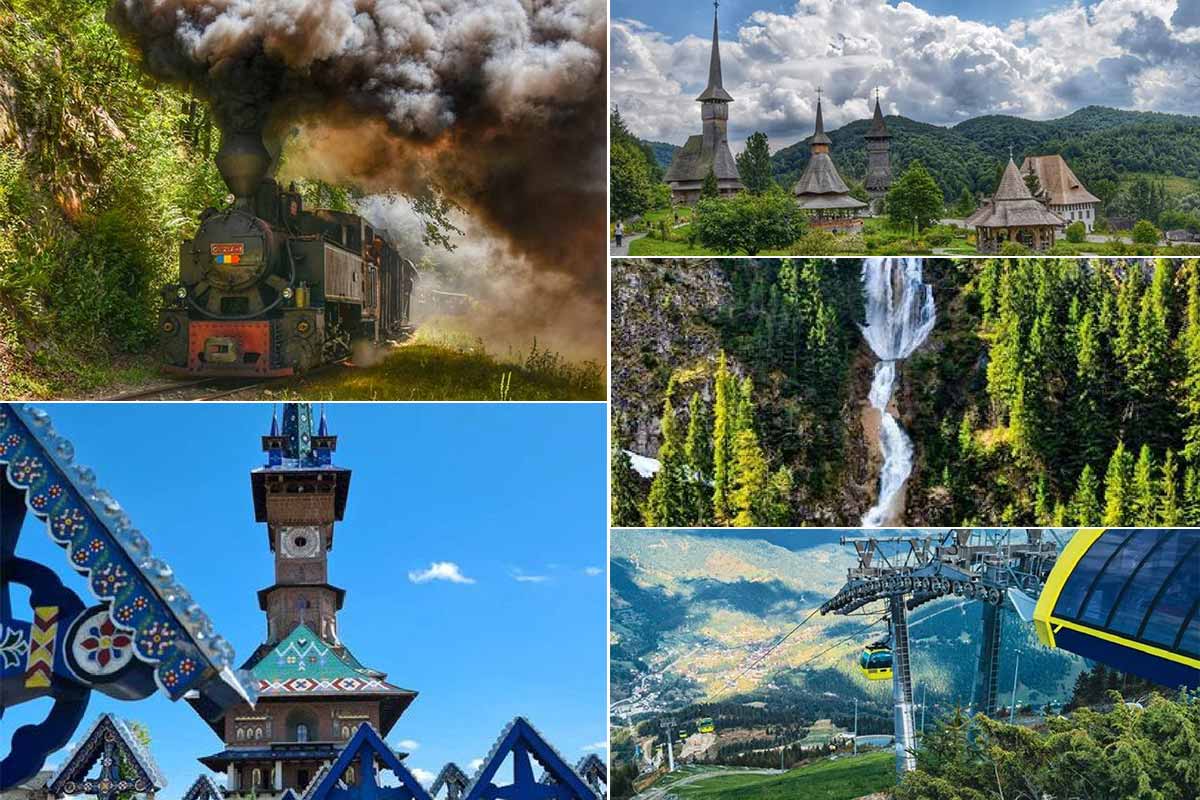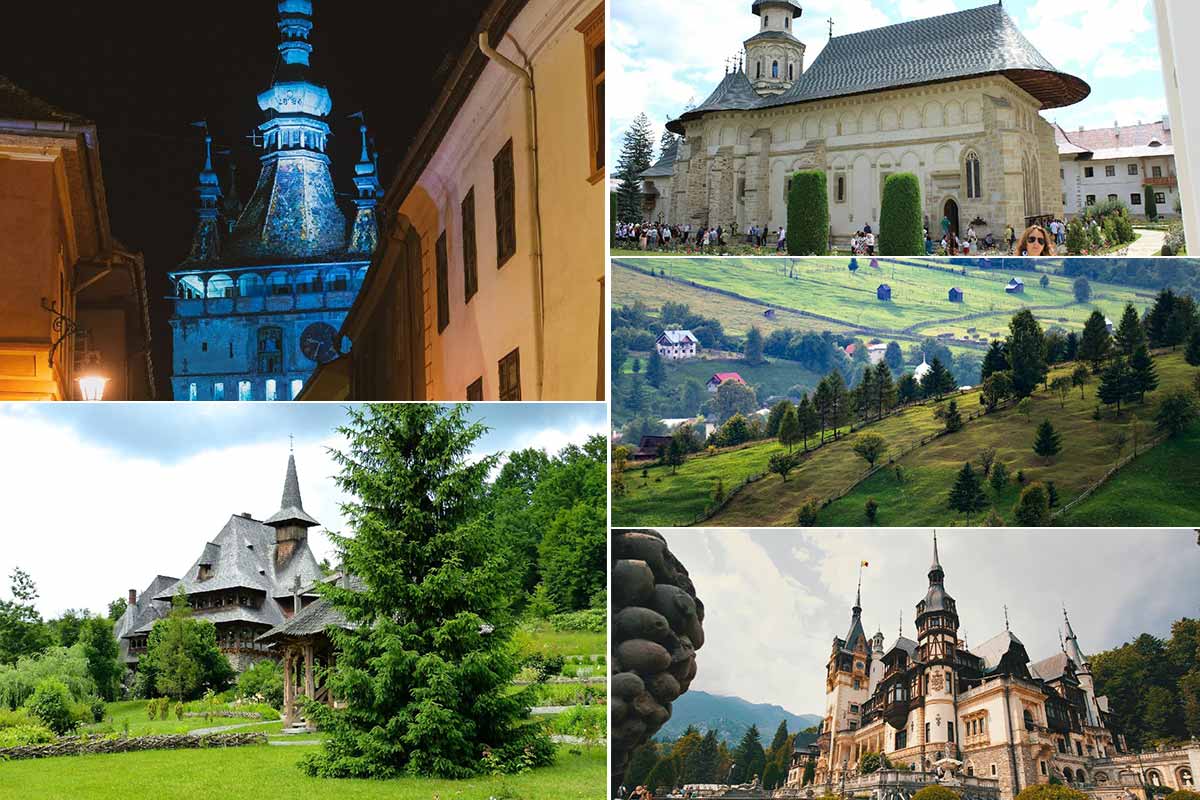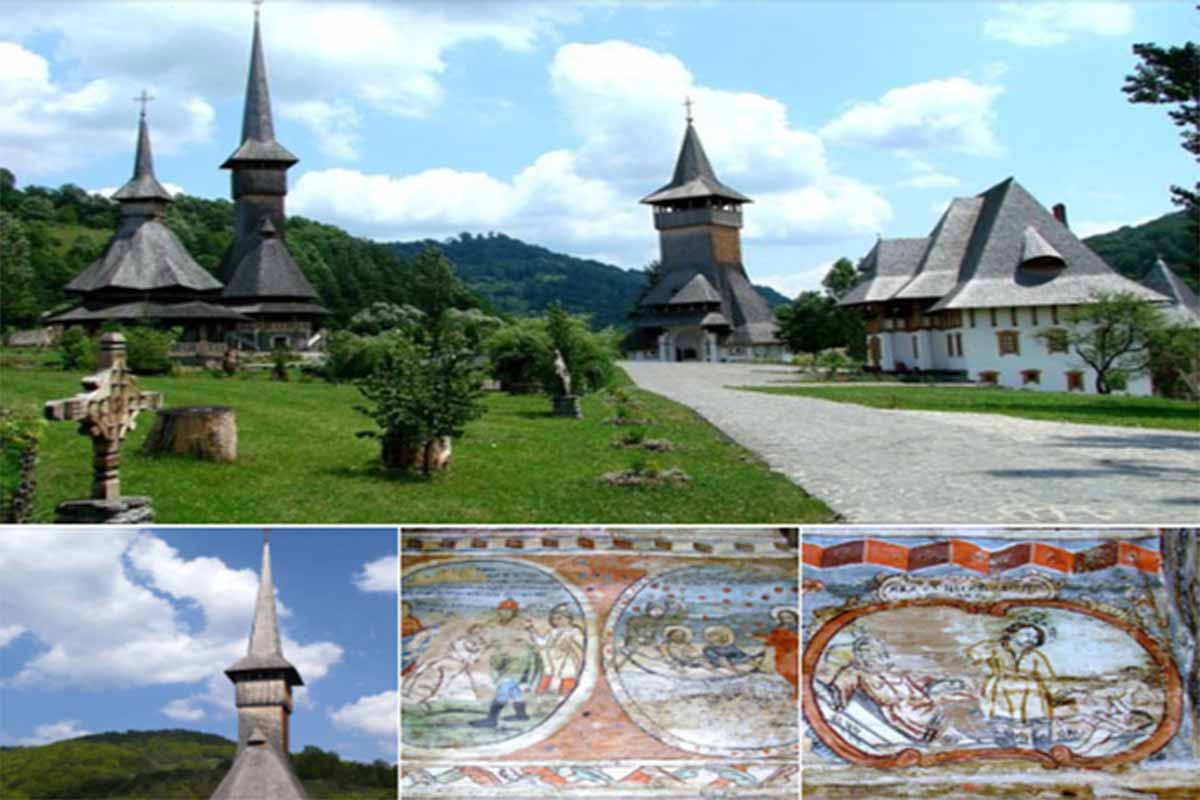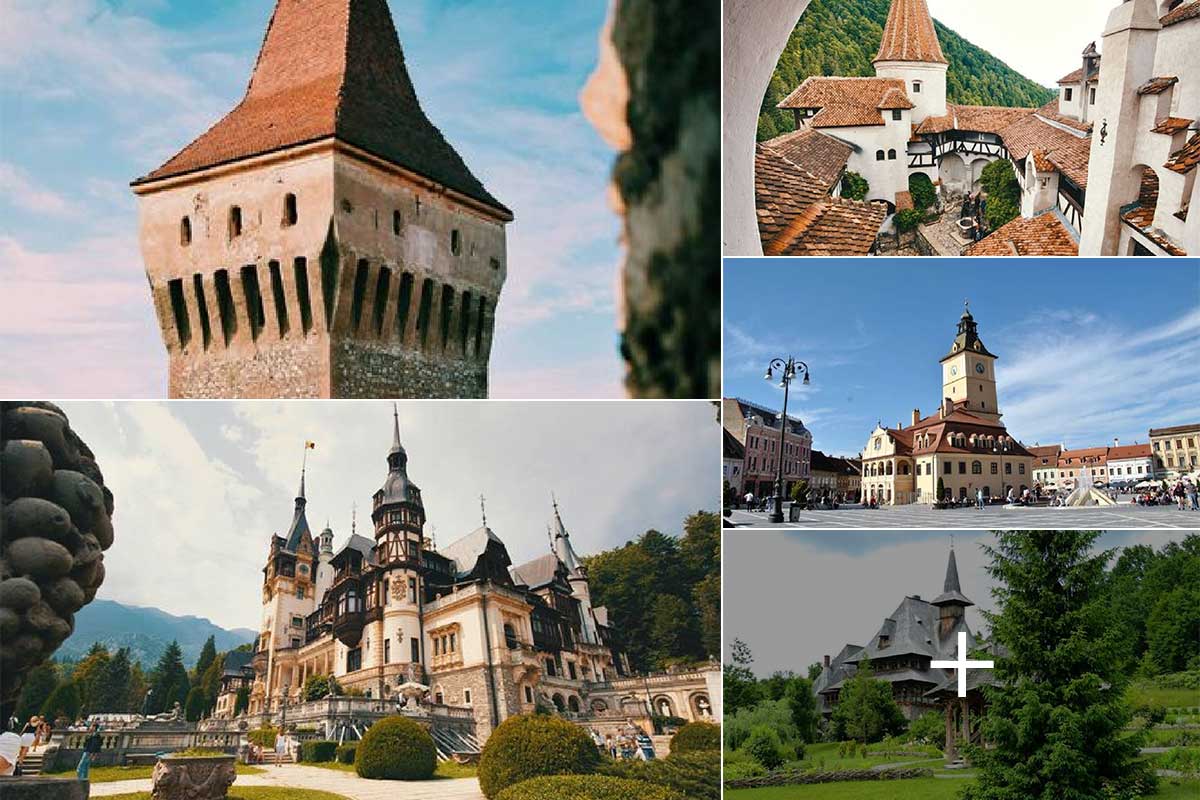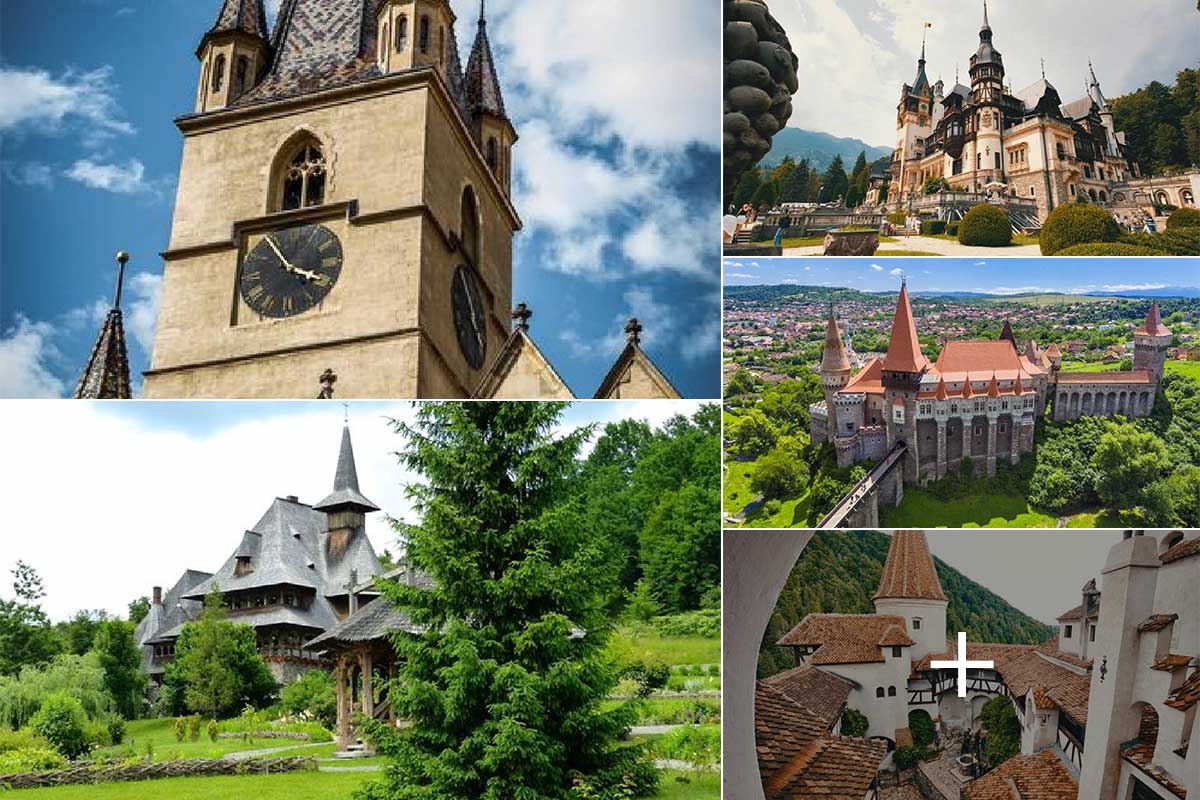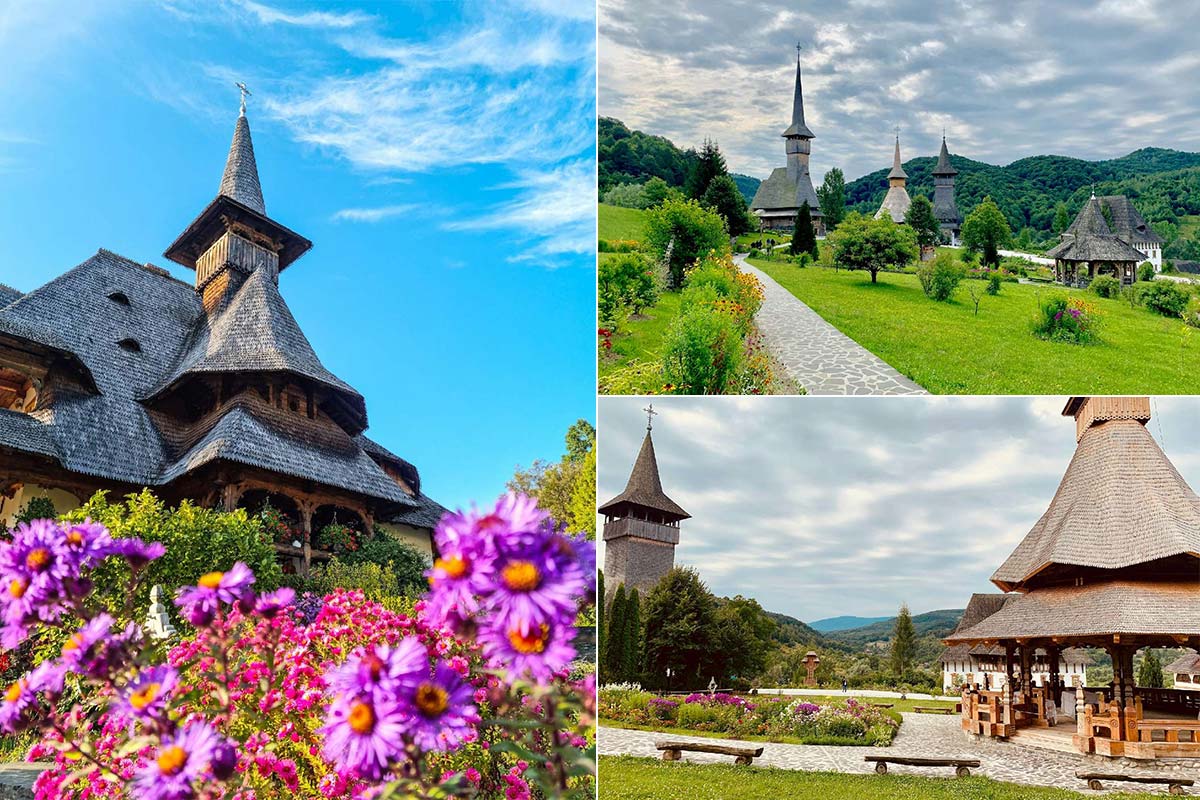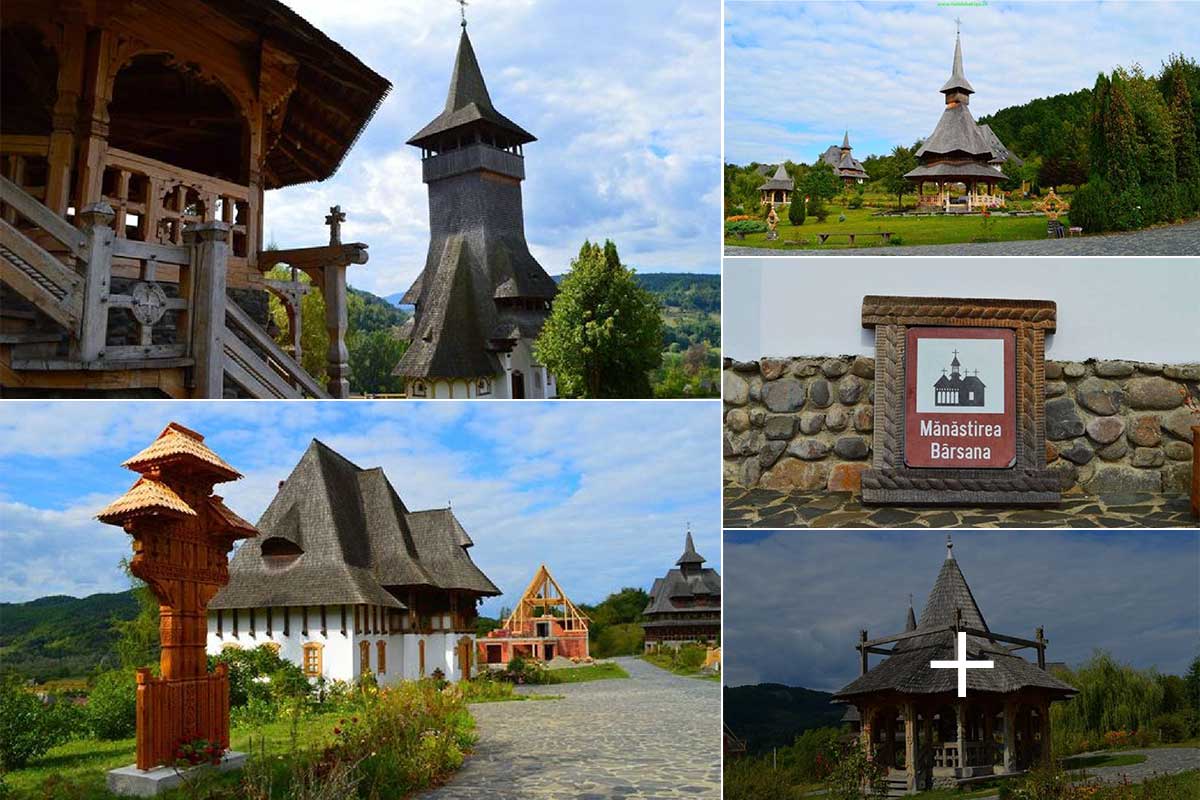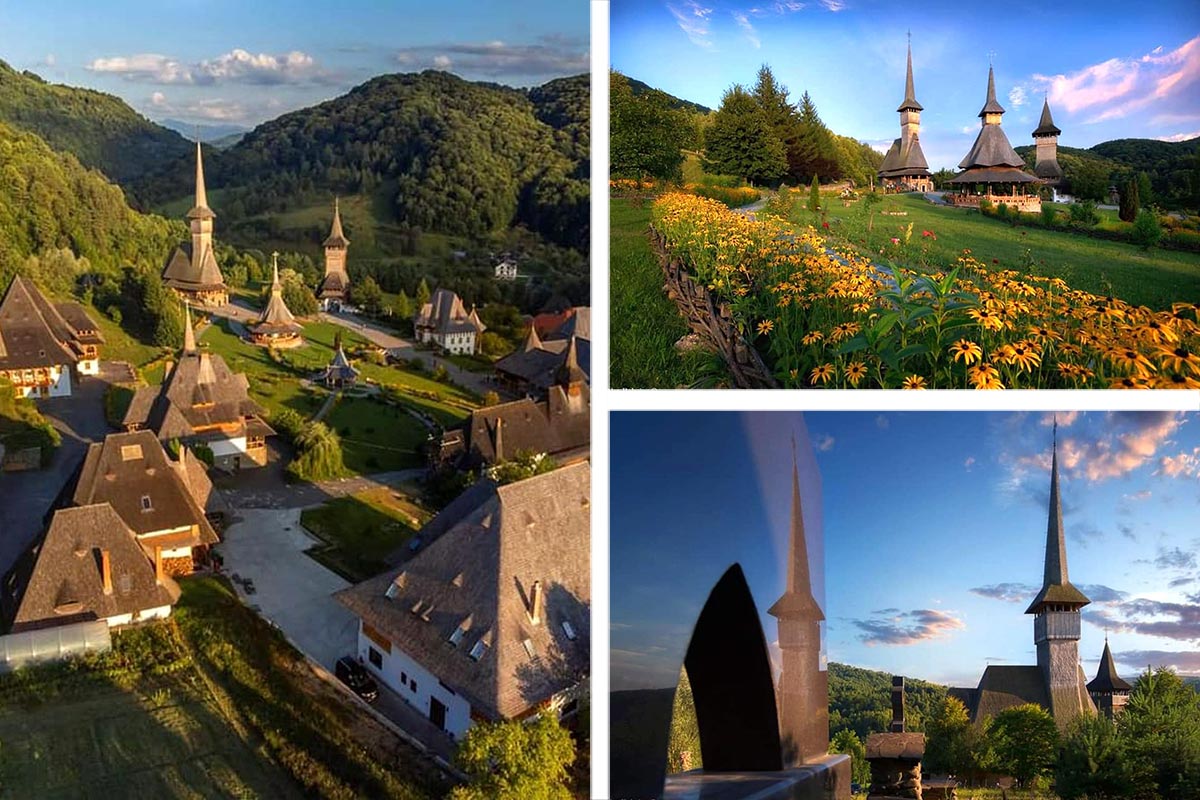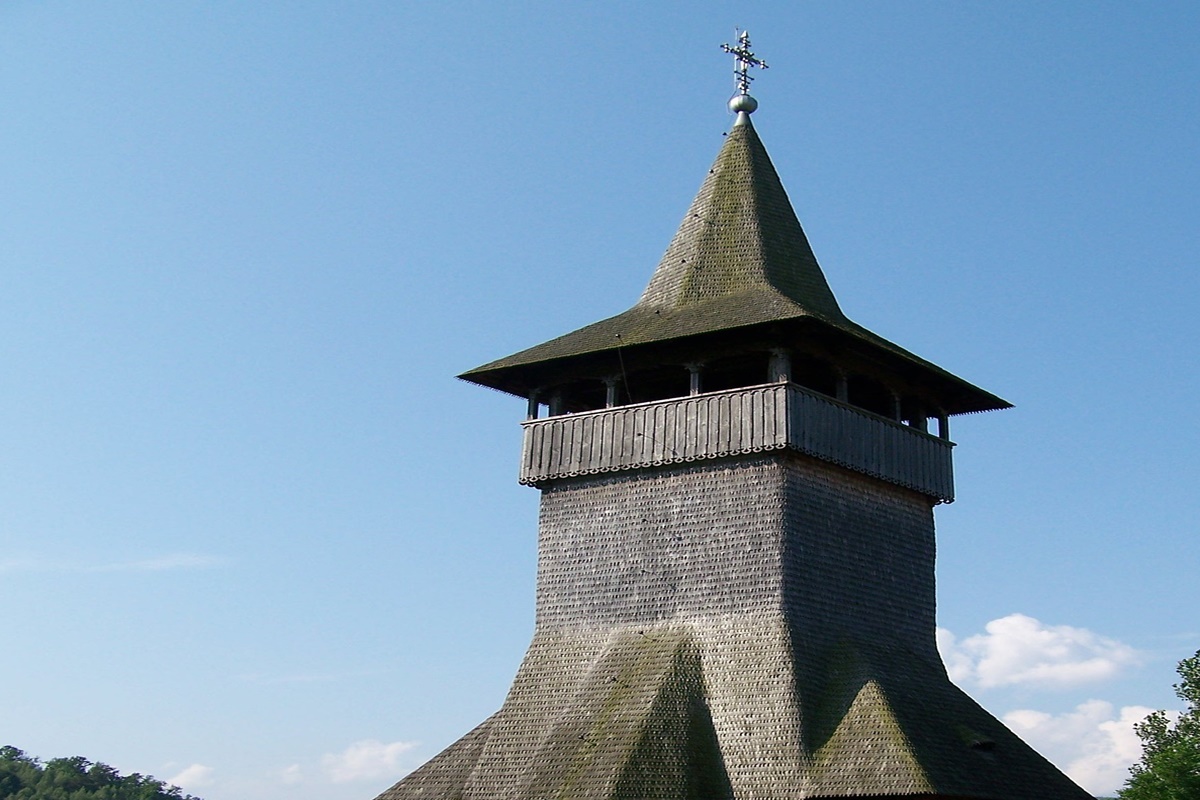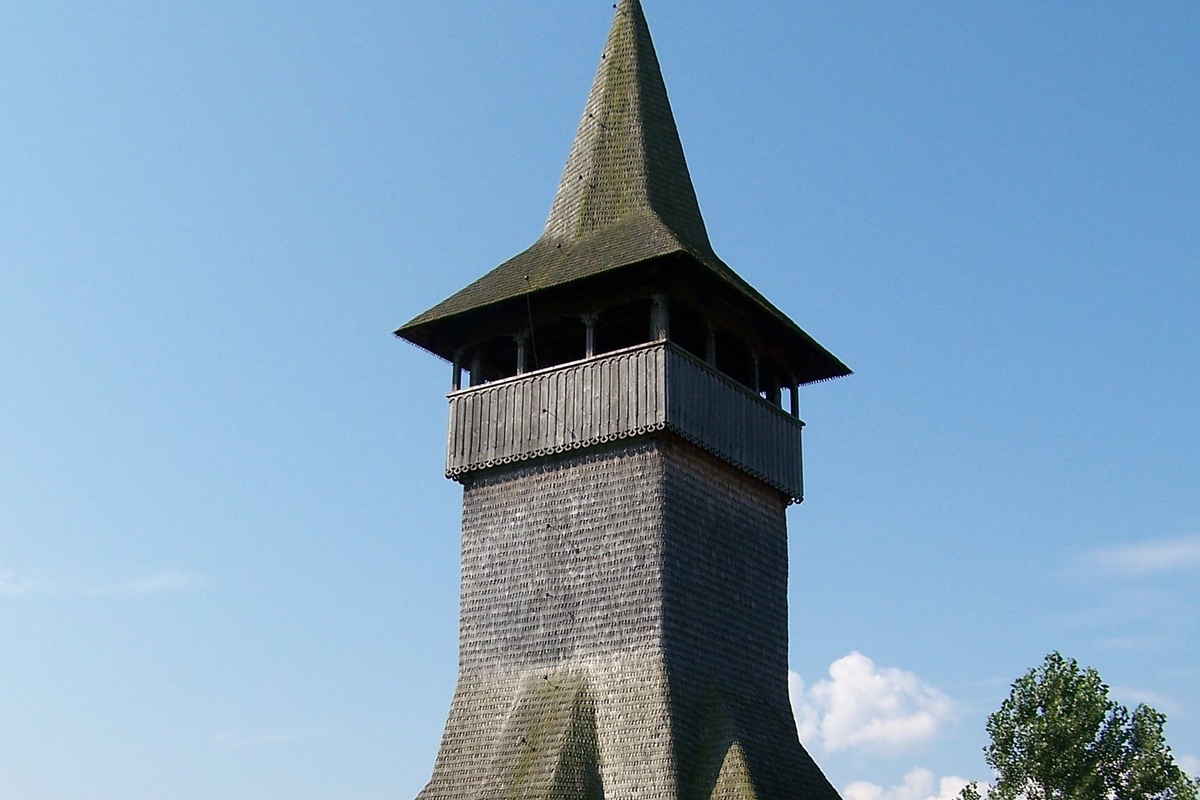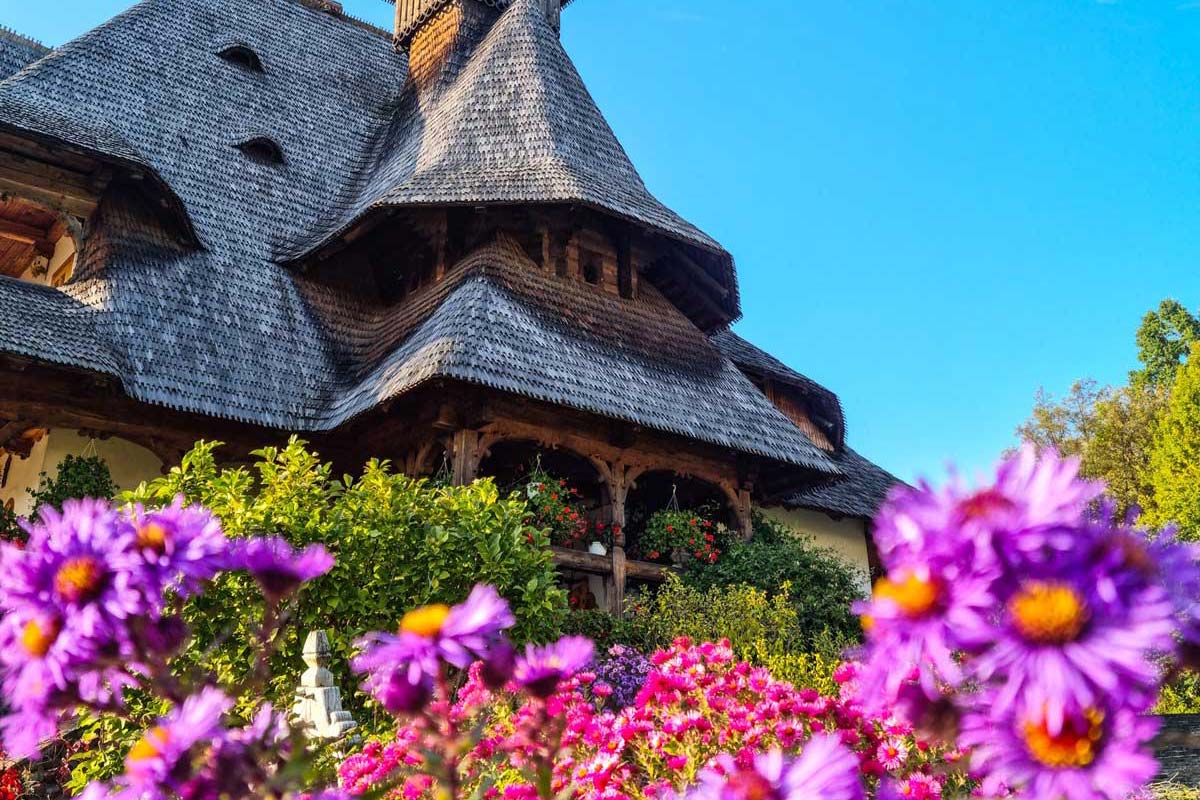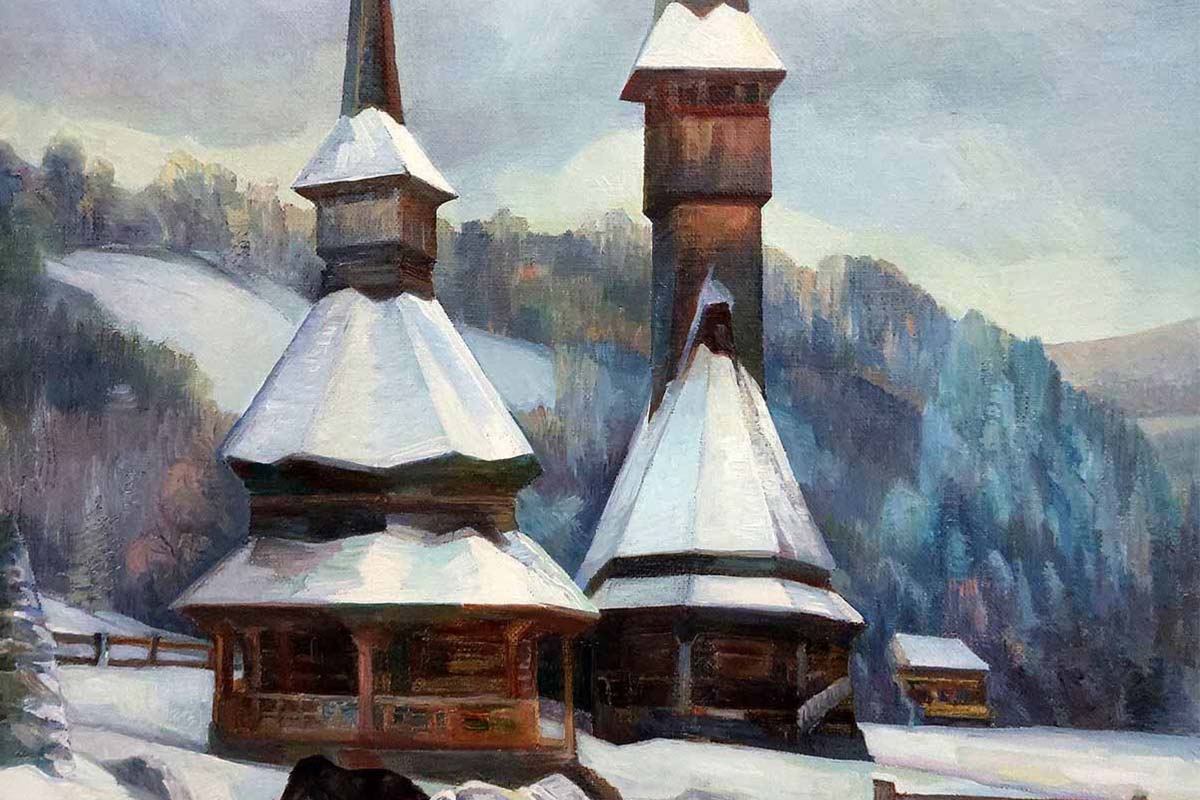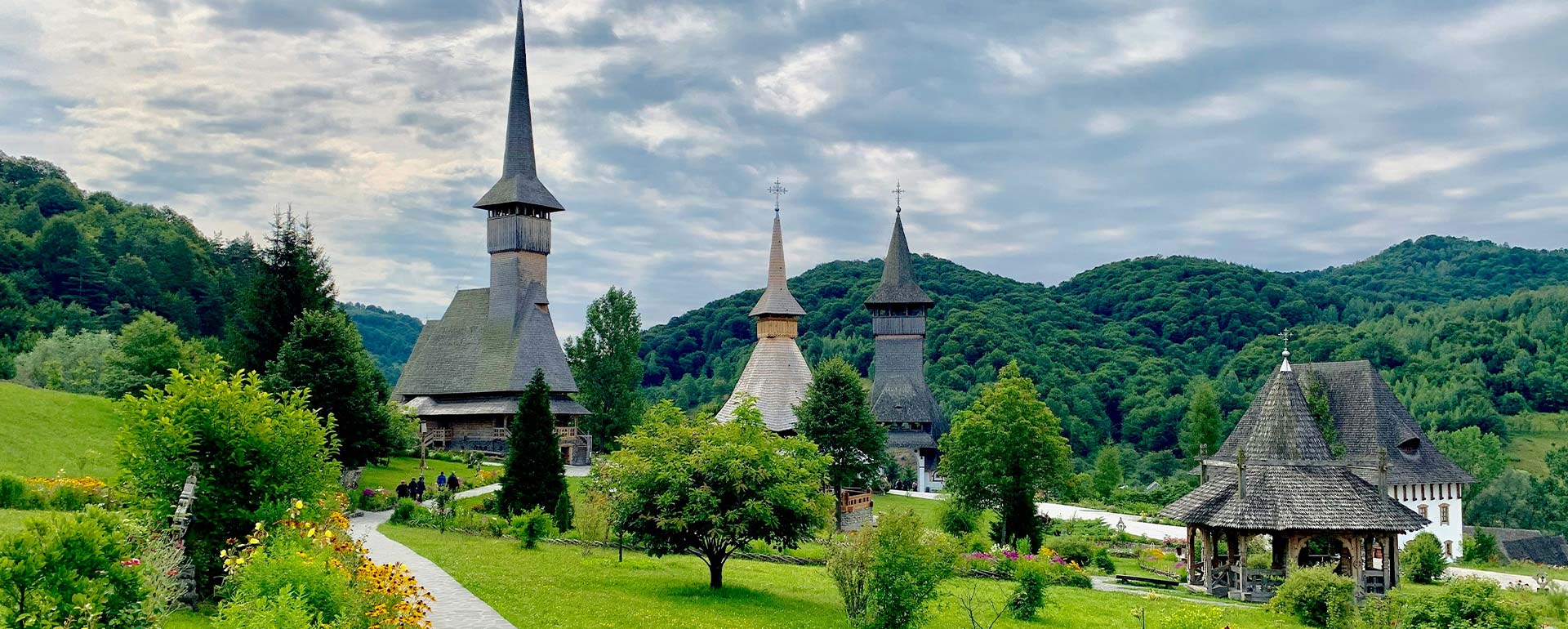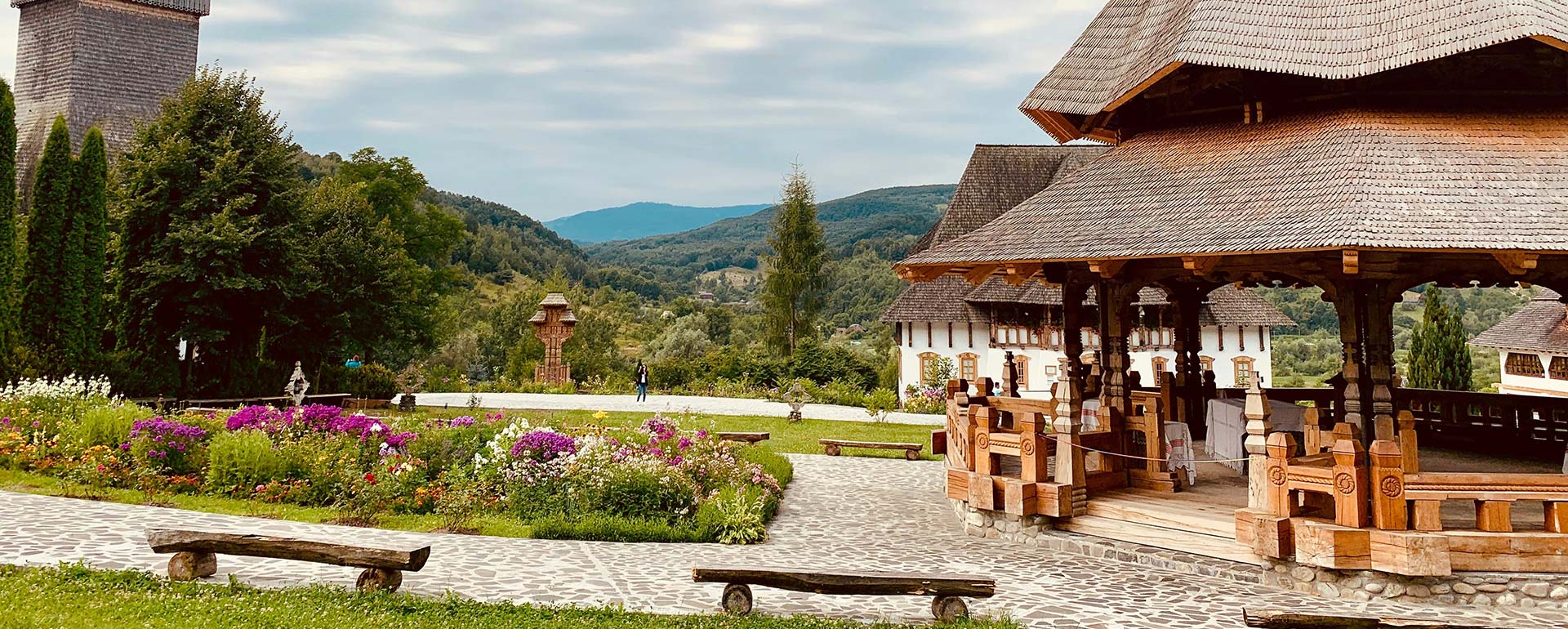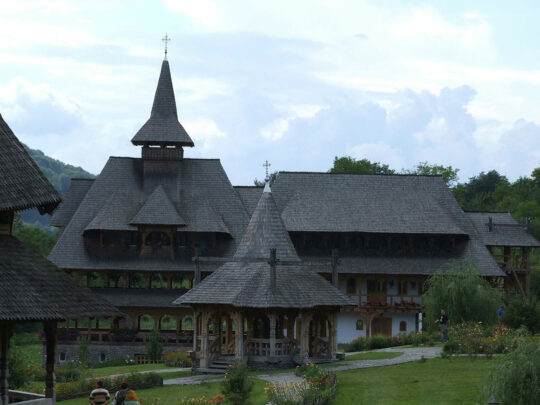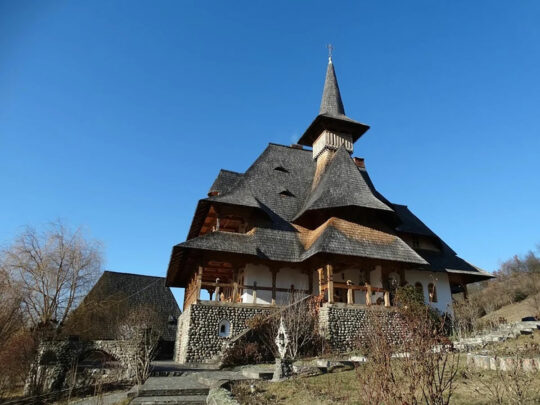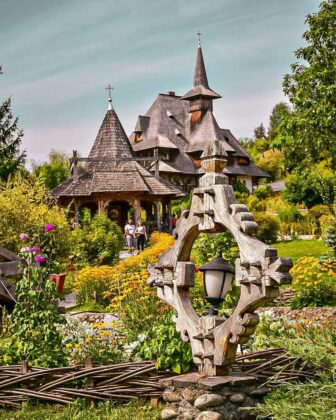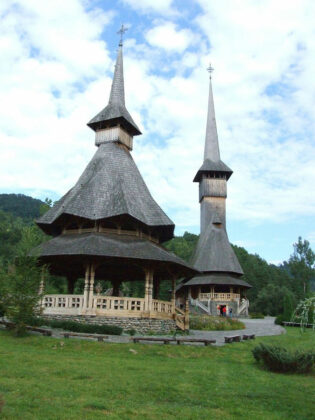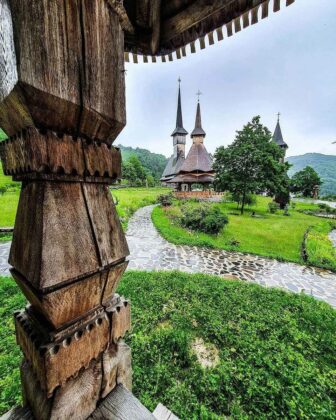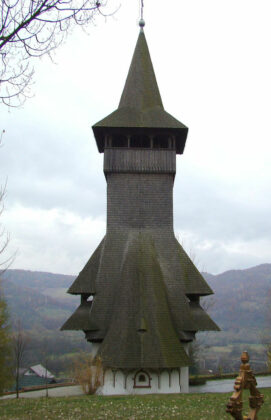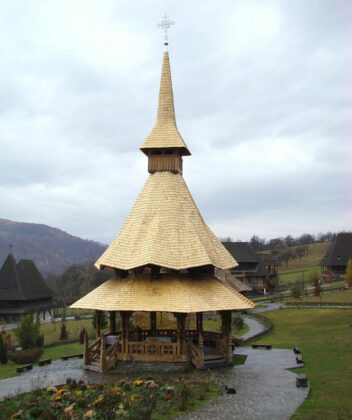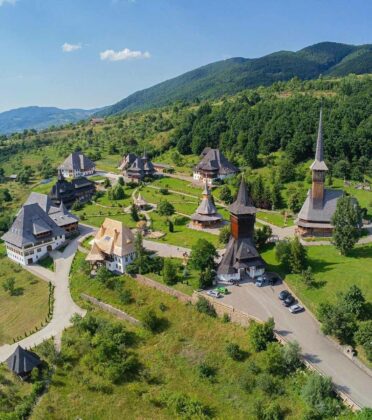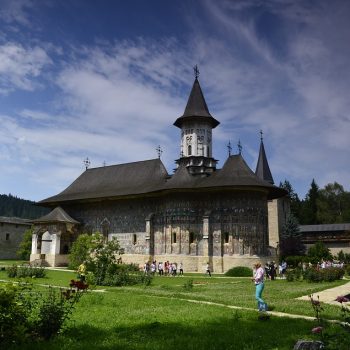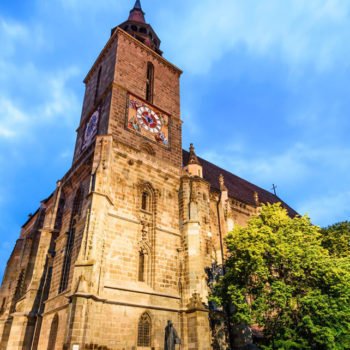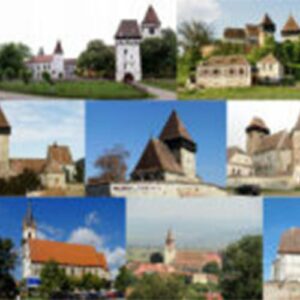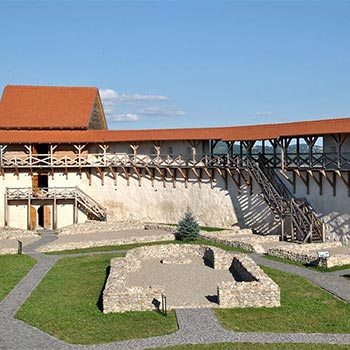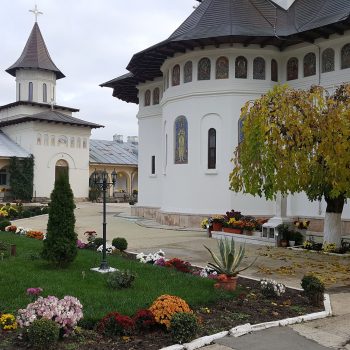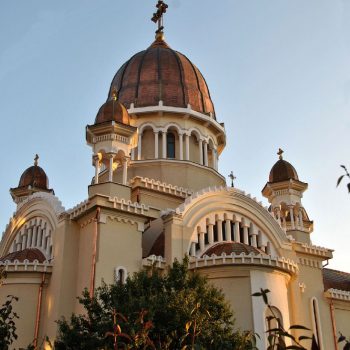It is an Orthodox monastery from Romania located in Barsana commune, Maramures county. The monastery is located 22 km southeast of Sighetul Marmatiei, at the exit from Barsana, towards Slatioarei bridge. The church is located in historical Maramures, on the Iza valley.
County: Maramureș
Images: red_frog | mihaita_mano | go_out_romania | wikipedia
More details – History
Bârsana Monastery is a holy place and an icon of the soul for the Orthodox Christian from Maramureș, representing one of the reference objects here. The church is one of the highest in Romania, with a height of almost 57m, also here is the second wooden church that is part of the World Heritage. The purity of the landscapes of Bârsana is a gift for the eyes and soul, as a pilgrim or as a simple tourist, the beauty settles in your soul by itself.
“Bârsan” means a shepherd who keeps his sheep with long and rich wool, the word becoming a surname in medieval times. Bârsana is one of the largest communes in Maramureș and one of the most important villages on the Izei Valley, the name coming from the son of Stan Bârsan who owned the commune, attested in documents between 1326 and 1346. The construction is made of wood , according to the local tradition, having elements specific to the area: the Maramuresi gate, the bell tower, the chapel, the altar, etc.
Currently Bârsana is one of the favorite destinations of tourists and pilgrims from the country but also from abroad thanks to the wooden church of the Bârsana Monastery, this being one of the most beautiful in the area of Maramureş but also of the popular port, of the beautiful gates carved in Maramureşian style and not in the last row of the culinary area. Recently, its Museum was built within the monastery premises.
The old wooden church was built in 1711 in the place called “Parul Calugarului” by the noble priest Ioan Stefanca, together with his sons, to thank God for offering them protection during the great plague. The church was moved to Valea Izei around 1739, over an old cemetery. The church was moved once before 1795 and placed in the middle of a cemetery.
The interior of the church was repainted in 1806 by Hodor Toader. The paintings were executed on wood, fixed on the walls and covered with a layer of prepared lime.
The roof consists of double eaves with a tall bell tower above it, with a pyramidal shape.
The monastic complex was built of wood, according to local tradition. It is composed of: the specific Maramure gate, the bell tower, the church (with a height of 57 m), the summer altar and the artists’ house (the workshop). Recently, the museum inside the monastery was built.
Currently, the patron saint of the monastery is celebrated on June 30 and bears the name “Council of the 12 Apostles”, which represents the protectors of the monastery.
Our UiR database: search results for „Barsana”

